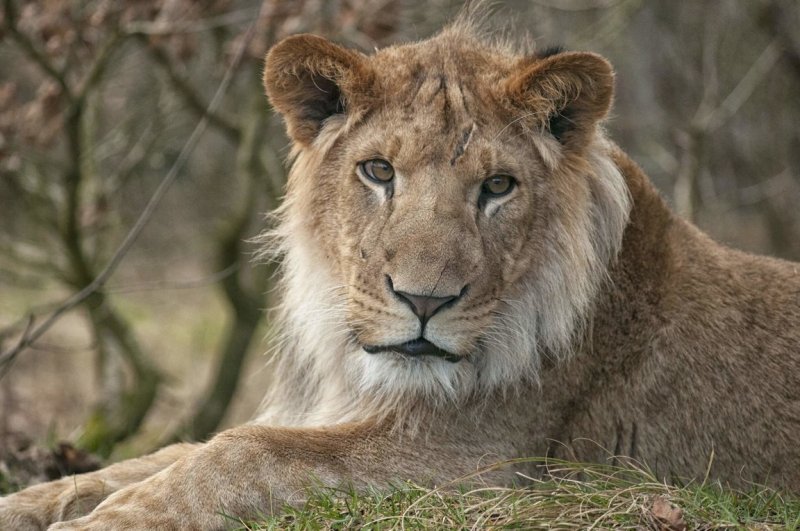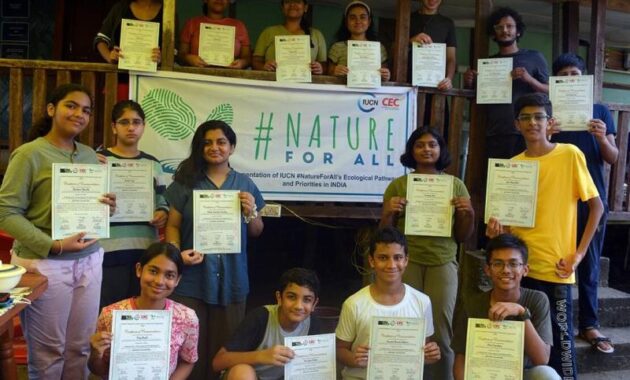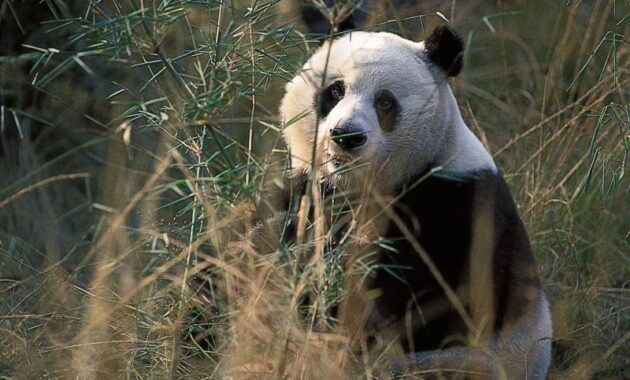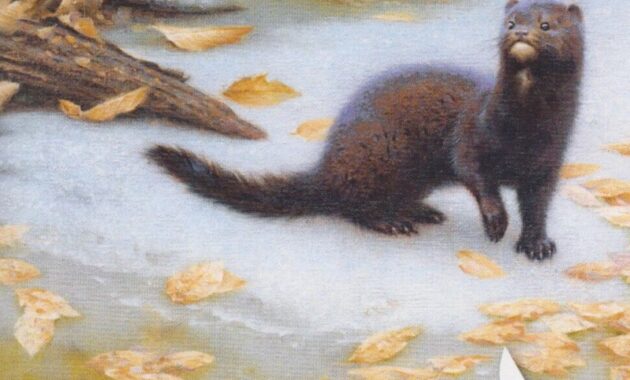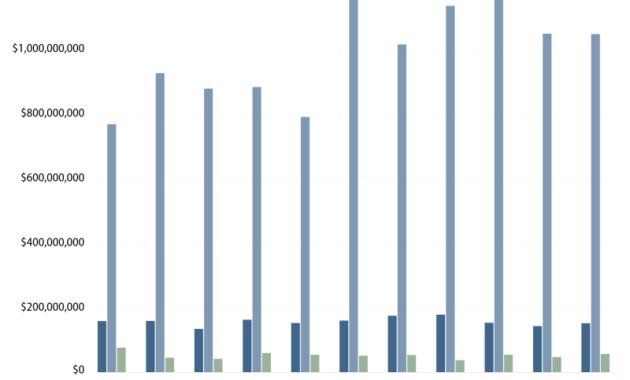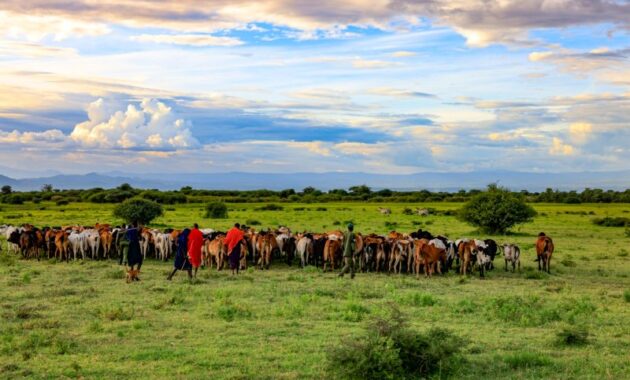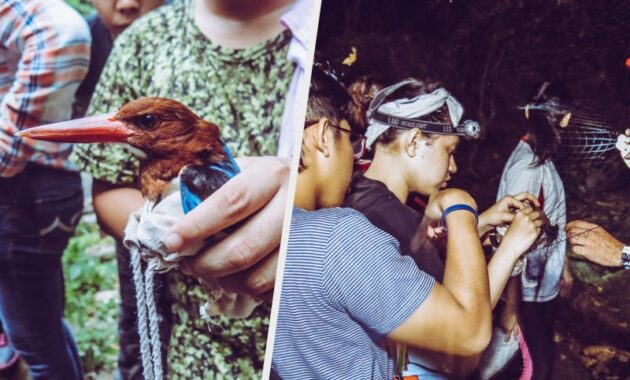Protecting Wildlife Habitats – The Greater Amboseli Ecosystem is considered one of Africa’s remaining wildlife resources. Increasing human-wildlife conflict in ecosystems is a direct result of competition between wildlife and local communities for scarce resources on shrinking land plots.
Strategic wildlife habitat management is needed to reduce conflicts, and this is a pressing issue for Big Life.
Protecting Wildlife Habitats

Elephant, buffalo, zebra, wildebeest, gazelle and gazelle migrate with the rains in search of greenery and return to permanent wetlands to find water and feed each dry season. There are herds full of many predators, including lions, leopards, cheetahs and hyenas. The dry woodland is home to giraffe, eland, gerenuk, lesser kudu and many other small animals. Add in the variety of birds and the spectacular backdrop of Kilimanjaro, and it’s no wonder that Amboseli is one of Africa’s most popular destinations and a great travel destination.
How Youth Can Lead In Protecting Wildlife
Amboseli has an abundance of wildlife in a variety of habitats, from glaciers to rainforests, forests, dry forests, grasslands, wetlands, seasonal lakes, lava flows and windy plains near the high mountains. To the south, 19,600-foot Kilimanjaro towers over the plains of Amboseli. To the east are the volcanoes of the Chilus and Tsavo West National Parks. To the north rises a range of darker, more distant hills that stretch into the Kenyan highlands.
This place near Ram Durga village, Gangavati Taluk supports biodiversity including endangered species like leopards, wolves, yellow throat and pangolin. The village has been badly affected by illegal mining, encroachment and rapid deforestation. These forces have also wreaked havoc on the area’s wildlife, along with the hunting rituals of local communities. In an effort to protect and restore the habitat,
Wildlife SOS acquired around 40 acres of land near Ram Durga village in 2006 to build a wildlife corridor and release vulnerable villages at risk of joining the Reserve forest layer. By preserving this, Wildlife SOS has protected the ecosystem and the diversity within it.
In April 2012, the rural rehabilitation project was expanded to an additional 10 acres with the support of BHEL, PSSR, Chennai. In consultation with horticultural experts, saplings of various trees and shrubs suitable for the site were selected and about 10 thousand saplings were planted. We grow Mahuva, Neem, Arjuna, Mango, Amla, Indian Beech, Bamboo, Custard Apple, Indian Laburnum, Fig, Banyan, Jamun, Bogenia, Bodhi etc. in 10 acres. we restored water to support natural wetlands.
There is a well for water supply, an irrigation system and a solar electric fence to protect the grounds. In addition, community members were given the responsibility of managing and supervising the work. In just 2-3 years, the project will reach 90 percent. Seedlings planted ½ -1 inch in diameter and 2-3 feet tall have grown to 8-9 inches tall and 8 feet or more. Where restoration began early, wildlife was found to have returned to use this habitat.
Wildlife SOS works with local communities and hunters to educate and empower them to monitor and protect forests. We are working to stabilize agricultural land adjacent to the forest to create protected areas for wildlife.
Aim: To protect the habitat of wild wild bears and support rich biodiversity, including endangered species such as tortoises, leopards, yellow bulls and pangolins.
Want To Stop The Next Pandemic? Start Protecting Wildlife Habitats
Habitat restoration for an equal future for wildlife SOS launched the Rewild project for wildlife to plant native trees. Read more
Open Well Protection Scheme to prevent animals (especially leopards) from entering Maharashtra’s open wells Read More
The Pear Dance Project is to end the 400 year old practice of the ‘bear dance’ in India and provide lifelong care and sanctuary to the bears we rescue. Read more

Elephant Rescue and Conservation Rescue and rescue captive elephants from dire situations and care for them through life on their rehabilitation journey. Read more
Habitat Conservation: Guardians Of The Natural World
Leopard Conservation works to reduce human-leopard conflict and save orphaned and injured leopards for life. Read more
Community Recovery Program Enable indigenous communities to achieve sustainable livelihoods after their bears are released. Read more
Reducing Human-Bear Conflict Protect and provide medical care to bears in India that are vulnerable to conflict, poaching and other threats. Read more
Prevention of human-wildlife conflicts Provide rescue, rescue and medical helplines for injured or displaced animals. Read more
Hunter Region Wildlife Conservation. Protecting Australian Wildlife
Forest Protection The Forest Surveillance Program assists the forest department and law enforcement agencies in dealing with wildlife traffickers, poachers and poachers. Read more
Human-Elephant Conflict Advocacy Reduce conflict with wild elephant herds and educate in the Chhattisgarh region of India. Read more
SOS Wildlife Research and Conservation recognizes the importance of humanitarian care and education in wildlife conservation and habitat protection.

The Wildlife SOS Training and Awareness Program conducts workshops with local communities and agencies to address human-animal conflicts. Read more
Why We Need To Protect The Wildlife
We use cookies on our website to provide you with the most relevant experience by remembering your preferences and repeat visits. By clicking “Accept” you consent to the use of ALL cookies. Wildlife SOS does not sell personal information.
This website uses cookies to improve your experience while browsing the website. Among these cookies, cookies classified as necessary are stored in the browser because they are essential for the operation of the main functions of the website.
We also use third-party cookies to help us analyze and understand how you use this website. These cookies are stored in your browser only with your consent. You have the option to refuse these cookies. But setting some of these cookies may affect your browsing experience.
Cookies are essential for the website to function properly. This section only contains cookies to provide basic functionality and security features of the website. These cookies do not store personal information.
Cookies that may not be necessary for the website to function and are specifically used to collect user personal data through analytics, advertisements or other embedded content are considered unwanted cookies. It is mandatory to obtain user consent before enabling these cookies on your website.
Protecting wildlife is vital to the health and balance of our ecosystems. Conservationists must protect these habitats and ensure the survival of various species. By understanding the importance of wildlife habitat and the critical role of conservationists, we can better appreciate the importance of their role in protecting our ecosystems.
Protecting Wildlife Habitat
Wildlife habitats are natural areas that provide shelter, food, water and habitat for many species. This is essential for the survival and survival of wildlife populations, promoting biodiversity and maintaining ecological balance. Wildlife habitats include forests, wetlands, grasslands, rock formations, and many other ecosystems found throughout the world.
Conservationists face many challenges in protecting wildlife. Human activities such as deforestation, urbanization, pollution and climate change are the main threats. These activities lead to habitat loss, fragmentation and degradation, ultimately threatening the survival of many plant and animal species.
Conservationists play an important role in protecting wildlife habitats and reducing threats to them. Their work includes a variety of tasks, including:

Conservationists conduct extensive research to understand the ecological requirements of different species and identify key habitats. They monitor wildlife populations, monitor migration patterns, and collect data to assess the health of ecosystems and determine conservation strategies.
Protection Habitats Photos, Images & Pictures
Conservationists work to restore degraded habitats by planting native plants, removing invasive species, and implementing sustainable land management practices. They work with local communities, governments and organizations to create protected natural areas, nature reserves and national parks.
Conservationists play an important role in raising awareness about the importance of wildlife habitats and the need to conserve them. They educate local communities, schools and the general public about the value of biodiversity, sustainable practices and the impact of human activities on ecosystems. By instilling a sense of responsibility, they encourage people to take action and support conservation efforts.
Conservationists advocate for policies and laws aimed at protecting habitats and sustainably managing resources. They work with governments, non-governmental organizations and other stakeholders to develop conservation strategies, pass laws and promote international agreements to protect animal habitats.
Conservation of wild places requires cooperation. Conservationists work with scientists, researchers, governments, non-governmental organizations, local communities and indigenous peoples to develop conservation plans. These partnerships use a variety of expertise and resources to help improve conservation practices.
Conservation Wildlife Missouri Certified Wildlife Habitat Sign
Conservationists play an important role in protecting wildlife and protecting our ecosystems. They seek to protect biodiversity and promote sustainability through research, habitat restoration, education, advocacy and collaboration. By recognizing the importance of wildlife habitat and supporting the efforts of conservationists, we can help biodiversity survive and maintain the health and balance of our critical ecosystems.
We live your travels. We bring you the meaning. Consider that you can make mistakes
Protecting animal habitats, wildlife habitats butterfly farm, sustainable wildlife habitats, protecting wildlife habitat, protecting the wildlife, protecting habitats of animals, protecting our wildlife, wildlife habitats, how to conserve wildlife habitats, protecting wildlife, protecting habitats, protecting natural habitats
- Conservation Education Programs 2023 - August 19, 2024
- Endangered Species Protection - August 16, 2024
- Wildlife Habitat Preservation 2024 - August 15, 2024

